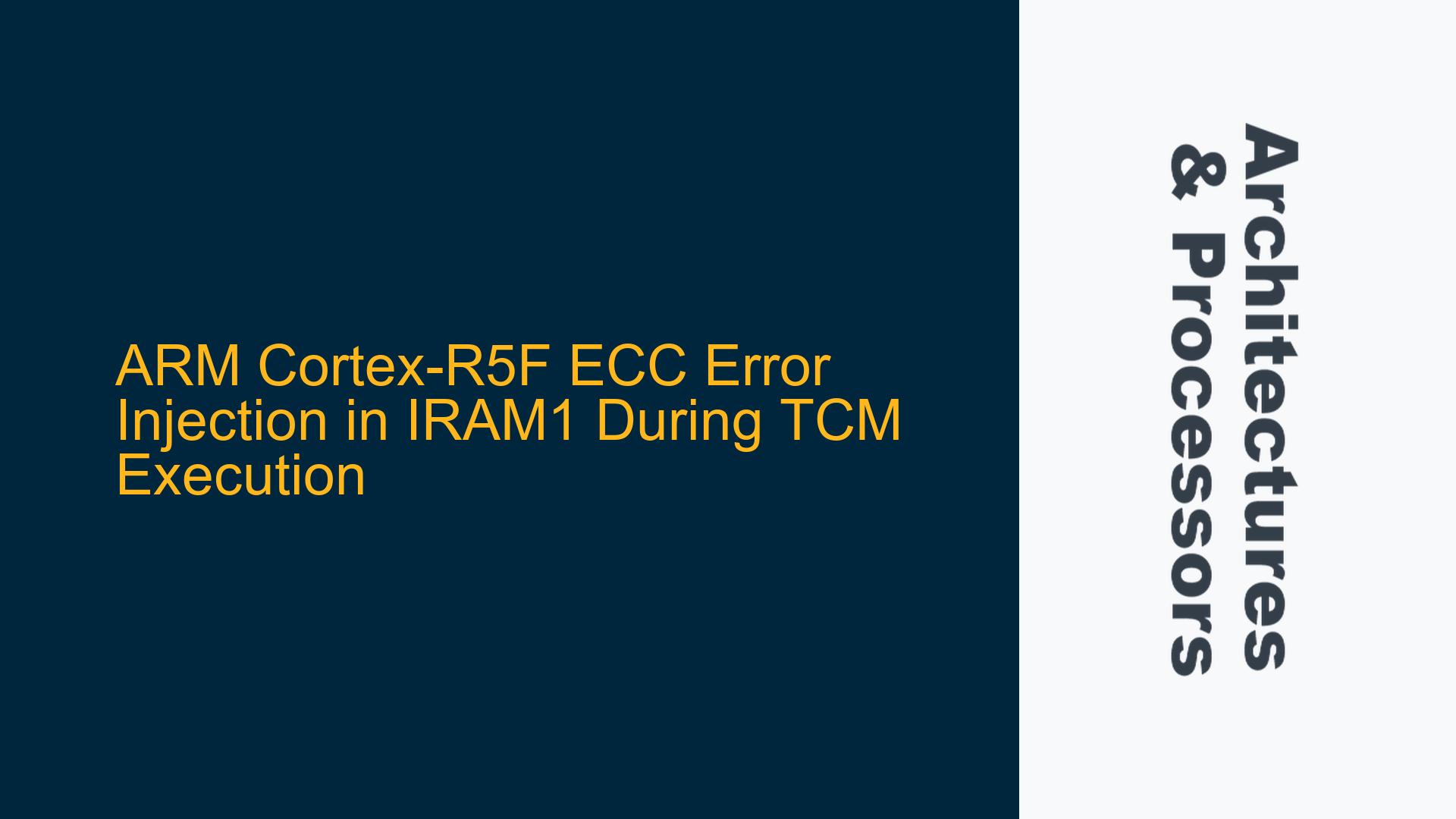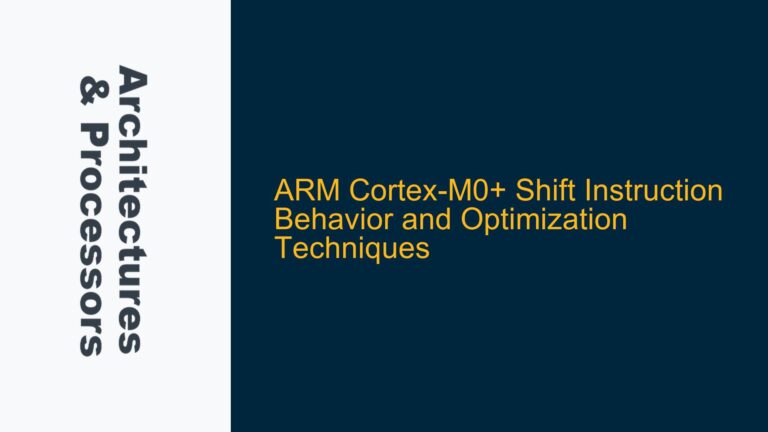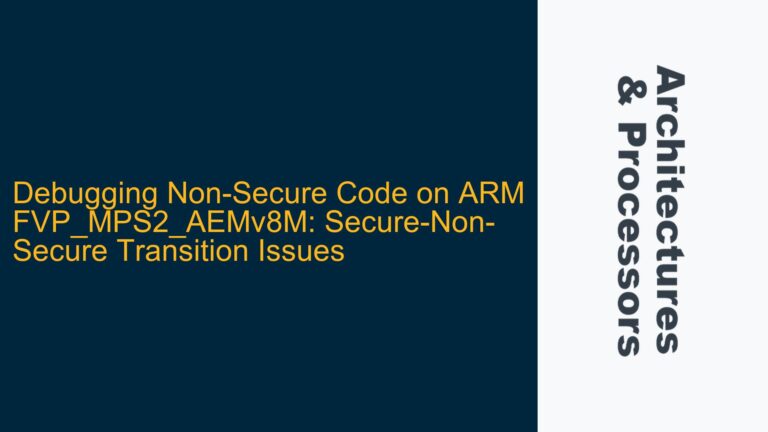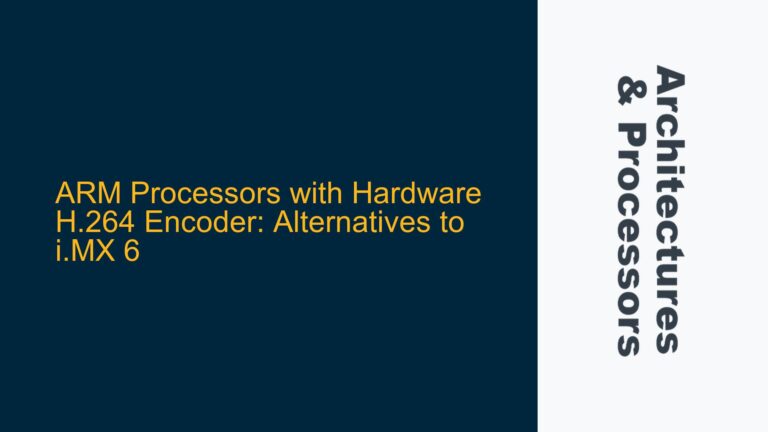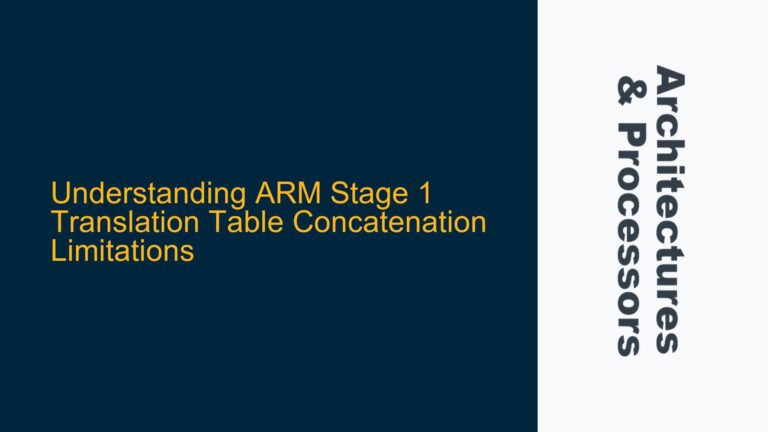ECC Error Detection in IRAM1 Triggered by TCM-Based "BX R14" Instruction
The core issue revolves around the unexpected detection of ECC (Error Correction Code) errors in IRAM1 when executing a "BX R14" instruction from Tightly Coupled Memory (TCM). The Cortex-R5F processor is designed with robust error detection and correction mechanisms, particularly for memory subsystems like IRAM1, which is critical for storing executable code. The user’s scenario involves injecting single-bit or double-bit ECC errors into IRAM1 while the error injection function itself resides in TCM to avoid interference. However, the ECC error status flag is set when the "BX R14" instruction is executed, even though this instruction is located in TCM and should not directly access IRAM1.
The Cortex-R5F architecture separates IRAM1 and TCM into distinct memory regions, each with its own access protocols and timing characteristics. IRAM1 typically serves as the primary instruction memory, while TCM is used for low-latency, high-performance code execution. The "BX R14" instruction is a branch instruction that changes the program counter to the address stored in the R14 (Link Register). If the branch target resides in IRAM1, the processor will fetch the next instruction from IRAM1, potentially triggering an ECC error if one has been injected.
The unexpected behavior suggests that the ECC error detection mechanism is sensitive to memory accesses initiated by instructions in TCM, even if the actual error resides in IRAM1. This raises questions about the interaction between TCM and IRAM1, particularly how the processor handles memory fetches and ECC validation across these regions. The Cortex-R5F’s memory subsystem is designed to ensure data integrity, but the timing and sequence of memory accesses can influence when and how ECC errors are detected.
Memory Access Timing and ECC Validation During Branch Execution
The root cause of the issue lies in the timing and sequence of memory accesses during the execution of the "BX R14" instruction. When the processor executes a branch instruction, it must fetch the next instruction from the target address, which may reside in a different memory region. In this case, the branch target is in IRAM1, while the branch instruction itself is in TCM. The Cortex-R5F’s memory subsystem performs ECC validation on memory reads, and if an error is detected, it sets the appropriate status flag.
The ECC error injection in IRAM1 creates a scenario where the memory content is intentionally corrupted. When the "BX R14" instruction is executed, the processor initiates a fetch from the branch target address in IRAM1. This fetch operation triggers the ECC validation logic, which detects the injected error and sets the error status flag. The key point is that the ECC validation occurs during the memory fetch, not during the execution of the branch instruction itself. This explains why the error is detected even though the "BX R14" instruction is located in TCM.
Another factor to consider is the pipeline behavior of the Cortex-R5F. The processor’s pipeline may prefetch instructions from IRAM1 before the branch is actually executed. If an ECC error is present in the prefetched instructions, the error status flag may be set earlier than expected. This prefetching behavior can complicate the timing of ECC error detection, making it appear as though the error is being detected by the branch instruction itself.
The Cortex-R5F’s memory subsystem also includes mechanisms for handling ECC errors, such as error correction and fault reporting. However, these mechanisms rely on accurate timing and sequencing of memory accesses. If the timing of the ECC error injection does not align with the memory fetch operations, the error detection may occur at unexpected points in the execution flow.
Implementing Precise ECC Error Injection and Detection Strategies
To address the issue, it is essential to implement precise control over the timing and location of ECC error injection and detection. The following steps outline a systematic approach to troubleshooting and resolving the problem:
-
Isolate the Error Injection Mechanism: Ensure that the ECC error injection function is fully isolated from the code being tested. This can be achieved by placing the error injection function in a separate memory region, such as TCM, and using memory barriers to prevent unintended interactions between TCM and IRAM1.
-
Synchronize Memory Accesses: Use data synchronization barriers (DSB) and instruction synchronization barriers (ISB) to control the timing of memory accesses. These barriers ensure that all pending memory operations are completed before proceeding to the next instruction. This can help align the ECC error injection with the memory fetch operations, making the error detection more predictable.
-
Monitor Pipeline Behavior: Analyze the pipeline behavior of the Cortex-R5F to understand how instructions are prefetched and executed. Use performance monitoring tools to track the timing of memory fetches and ECC validation. This information can be used to adjust the timing of the ECC error injection to match the pipeline behavior.
-
Validate ECC Error Handling: Verify that the Cortex-R5F’s ECC error handling mechanisms are functioning correctly. This includes checking the error status flags, error correction capabilities, and fault reporting mechanisms. Ensure that the processor responds appropriately to injected ECC errors and that the error status flags are set as expected.
-
Adjust Error Injection Timing: Experiment with different timing strategies for injecting ECC errors. This may involve delaying the error injection until after the branch instruction is executed or aligning the injection with specific pipeline stages. The goal is to ensure that the error is detected at the intended point in the execution flow.
-
Test with Different Memory Configurations: Test the system with different memory configurations to identify any dependencies on memory timing or access patterns. This may involve adjusting the memory controller settings, changing the memory layout, or using different memory types.
-
Document and Analyze Results: Document the results of each test and analyze the data to identify patterns or trends. This information can be used to refine the error injection and detection strategies, ultimately leading to a more robust and reliable system.
By following these steps, it is possible to gain a deeper understanding of the interaction between TCM and IRAM1 in the Cortex-R5F and to develop effective strategies for injecting and detecting ECC errors. The key is to carefully control the timing and sequencing of memory accesses and to validate the system’s behavior under different conditions. This approach will help ensure that the ECC error detection mechanism functions as intended, providing reliable error detection and correction for critical memory regions like IRAM1.
